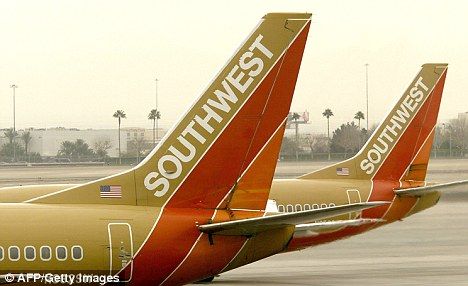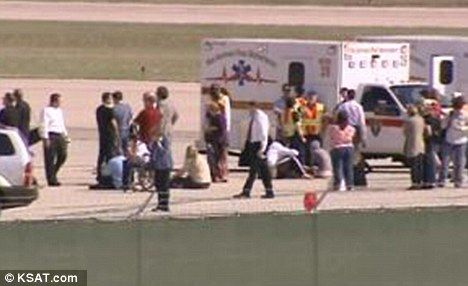Yep. 87 reported events 2009-2010
III. Results
During this 24-month period, 87 events on 47 aircraft met the inclusion criteria. The sources of contaminated air
reports are listed in Table 2. All but one of the events reported to a crew union were also reported to the airline. The
exception was an event that a pilot reported to his union only. Although the author only found a SDR for 33 of the
87 events, 66 appear to meet the SDR reporting requirements. In 64 of the 87 events, mechanics reviewed relevant
aircraft mechanical records and pilot logbook entries.
Table 2. Sources of contaminated air reports
Source Number of events
Crew report(s) to the airline, union(s), or both 48
Crew report(s) + Service Difficulty Report (SDR) 18
SDR only 15
Cross-referenced in aircraft mechanical records
and pilot logbook entries that mechanics reviewed
for another event, but not reported to either the
union or the FAA
6
Total 87
Crewmembers reported contaminated air events on all eight aircraft types operated by the airline during the
study period. The author attempted to assess whether an aircraft type was over- or under-represented in the
fumes dataset by comparing the percentage of each aircraft type in the dataset to the percentage of that aircraft
type in the airline fleet (fifth column in Table 3), so a value of “one” would be expected. The A319, B767, and
E190 aircraft appear to be over-represented, while B737 aircraft appear to be under-represented. These findings
may not be statistically significant, however, and normalizing parameter data (e.g., miles flown, total number of
take offs and landings, etc.) were not available.
Table 3. Number and proportions of incident aircraft,
contaminated air events, and aircraft in fleet, all by aircraft (AC) type
AC
type
N (%a)
incident AC
N (%a)
events
N (%a )
AC in fleet
% incident AC/
% AC in fleet
Over- or underrepresented?
b
A319 16 (34) 30 (34) 54 (25) 1.4 over
A320 4 (8.5) 6 (6.9) 23 (11) 0.77 -
A321 9 (19) 11 (13) 38 (17) 1.1 -
A330 3 (6.4) 6 (6.9) 16 (7.3) 0.88 -
B737 3 (6.4) 10 (11) 47 (22) 0.29 under
B757 3 (6.4) 3 (3.4) 15 (6.9) 0.93 -
B767 4 (8.5) 15 (17) 10 (4.6) 1.8 over
E190 5 (11) 6 (6.9) 15 (6.9) 1.6 over
TOTAL 47 87 218
a. Totals may not add to 100% exactly because of rounding.
b. Qualitative analysis only; may not achieve statistical significance.
One contaminated air event was reported on 29 of the 47 aircraft in this dataset, and multiple events were
reported for the remaining 18 aircraft (Table 4). The majority of the repeat events were on A319 aircraft, with the
exception of one B767 aircraft with 12 reported events during the study period.
Table 4. Frequency of events by aircraft type for total of 87 events on 47 aircraft
Aircraft type 1 event 2 events 3 events >3 events
A319 7 5 3 1 (4 events)
A320 3 0 1 0
A321 8 0 1 0
A330 1 1 1 0
B737 0 1 1 1 (5 events)
B757 3 0 0 0
B767 3 0 0 1 (12 events)
E190 4 1 0 0
TOTAL aircraft 29 8 7 3
TOTAL events 29 16 21 21
In all but four reported events, there was a noticeable odor, whether noted in crew reports to the airline, airline
SDR to the FAA, aircraft mechanical records, pilot logbook entries, or follow-up telephone interviews with one or
more crewmembers. Of these odor descriptors, dirty socks/smelly feet is the most common (Table 5). In 50 of the 83
events with an odor, more than one odor descriptor was used. Descriptors reported in five or fewer events during the
study period were: acrid/sour, bad cheese, band aids, barnyard, burning/burnt, burnt cloth, burning dust, burning
leaves, burning plastic, exhaust, garbage, gasoline, kerosene-like, metallic, paint-like, scorched, skunk, smoky, stale,
sulfur, sweet, and urine. Only three of the 87 reported events involved a haze (2) or smoke (1) and in all three cases,
the smoke/haze was reported during ground operations and the flights were cancelled/delayed.
Table 5. Nature and frequency of odors associated with
contaminated bleed air events during two year period
Description of odor Frequency
Dirty socks/smelly feet 35
Musty/moldy/mildew 17
Foul/funky/horrible/noxious 13
Strong/intense/pungent/overwhelming 11
Oil/oily/burning oil 11
Vomit 9
Chemical 7
Burning wire/electrical 6
In 44 of the 87 documented events, an unusual odor was reported prior to take off, and in 34 of the events, an
odor was reported when the aircraft was airborne (Table 6). In five events, it was not clear if the odor was reported
prior to take off. Four events had no reported odor, but were included in the dataset based on crew symptoms
inflight and recent/subsequent documentation of oil in an engine/APU.
Table 6. Description of when odor was reported;
whether or not prior to takeoff and phase of flight
Odor reported
prior to take off?
Phase of flight during
which odor first reported
Yes Boarding/at gate 26a
Taxi out 18b
Total 44
No Take off/climb 15
Descent 11
Cruise 6
No odor 4
En route but phase not specified 2
Total 38
Don’t know 5
TOTAL 87
a. Of these, 14 were cancelled/delayed at the gate.
b. Of these, 6 returned to the gate.
Reported information on the crew health, flight safety, and operational impact, as well as relevant mechanical
failures, for the 44 flights during which one or more crewmembers reported an unusual odor prior to take off is
described in Table 7.
Table 7. Reported information on crew health, flight safety, operational impact
and mechanical failures for 44 flights with unusual odors reported prior to takeoff
(a) 20 flights cancelled/delayed due to
unusual odors reported prior to takeoff24 flights that flew to destination despite
unusual odors reported prior to takeoff
N (%) flights N (%) flights
≥1 FA reported symptoms 17 (85) (2 DKa) ≥1 FA reported symptoms 21 (88)
≥1 pilots reported symptoms 4 (20) (7 DK) ≥1 pilots reported symptoms 9 (38) (4 DK)
≥1 crew sought emerg. med. care 6 (30) (1 DK) ≥1 crew sought emerg. med. care 12 (50 ) (1 DK)
≥1 crew sought follow-up med care 12 (60) (1 DK) ≥1 crew sought follow-up med care 13 (54) (1 DK)
Cancelled/delayed prior to departure 14 (70) Next flight conf. cancelled/delayed 6 (25)
Returned to the gate during taxi out 6 (30)
≥1 crew lost work time 10 (50) (1 DK) ≥1 crew lost work time 13 (54) (1 DK)
Confirmed oil leak in APU 10 Confirmed oil leak in APU 8
Undefined APU contamination 2 Confirmed/susp. oil leak in engine 4
Undefined pack contamination 2 Confirmed/susp. oil leak in ACM/pack 3
Hydraulic fluid in APU 1 Undefined APU contamination 4
Unknown 5 Unknown 5
a. DK = don’t know
Reported information on the crew health, flight safety, and operational impact, as well as relevant mechanical
failures, for all 87 events.


